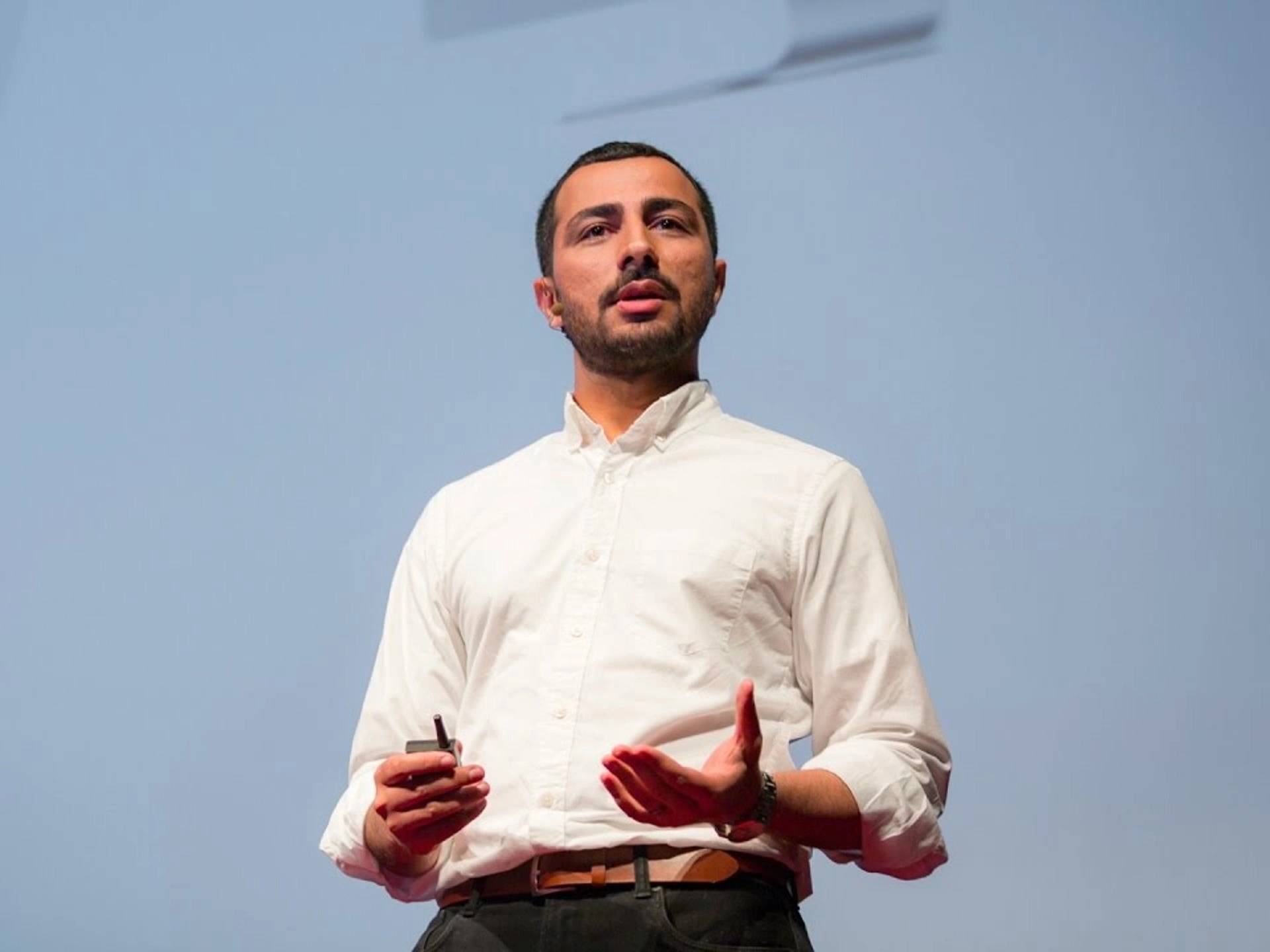订阅 wiki
Share wiki
Bookmark
Muneeb Ali
Muneeb Ali
Muneeb Ali 是 区块链 Stacks (前身为Blockstack) 的联合创始人,以及 Hiro PBC 的首席执行官,该公司负责开发和维护 Stacks 协议。
早年生活与教育
穆尼布·阿里出生于巴基斯坦的一个军人家庭。他的父亲从军队退役,在拉合尔附近的一个村庄长大,那里没有电,他必须长途跋涉才能上学。穆尼布认为他的成长经历让他产生了感恩和谦逊的品格。在巴基斯坦长大,他认识到保护财富免受快速通货膨胀和当地货币贬值的重要性,他的父母通过投资黄金和房产等资产来做到这一点。这些经历塑造了他的工作方式,尤其是在加密货币和去中心化金融领域。 [1]
阿里于2003年获得拉合尔管理科学大学计算机科学和数学学士学位。他于2011年获得普林斯顿大学计算机科学硕士学位,并于2017年获得同一机构的计算机科学博士学位。2014年,阿里参加了Y Combinator创业计划的2014年夏季班。 [2]
职业生涯
阿里于2005年在SICS开始了他的职业生涯,担任访问研究员,随后于2006年至2008年在代尔夫特理工大学担任研究人员。2007年,他曾是斯坦福大学的访问研究员,2008年至2010年,他在普林斯顿大学担任研究助理,这为他后来从事区块链技术奠定了基础。
2014年至2016年,阿里是Onename的联合创始人兼首席技术官,Onename是一个早期的比特币应用程序,实现了去中心化的名称和个人资料页面。构建此应用程序的经验促成了2017年Stacks的设计。
之后,阿里回到普林斯顿大学,在网络和系统组以及PlanetLab团队工作,并于2017年完成了博士论文答辩。2017年至2021年,阿里是Hiro Systems的联合创始人兼首席执行官,该公司为去中心化的Stacks生态系统构建开发者工具,其使命是在比特币上实现用户拥有的互联网。2022年,他转任Hiro Systems的董事会主席,同时共同创立并担任Trust Machines的首席执行官。在Trust Machines,阿里正在Stacks去中心化项目的成功基础上,构建最大的比特币应用程序生态系统和所需的平台技术。 [3]
Stacks
Stacks 是一个 比特币 层,用于 智能合约,用户可以在其中创建和构建 去中心化应用程序。
2013 年,在普林斯顿大学攻读博士学位期间,Muneeb 开始研究最终成为 Stacks 的项目。尽管他当时的研究与 区块链 技术没有直接关系,但他在学术界学习的理念和实践影响了 Stacks 的发展。Muneeb 对区块链创建真正去中心化互联网的潜力越来越感兴趣,并开始关注去中心化身份和命名。他和他的团队意识到,通过筹集风险投资并沉浸在创业生活中,他们可以更快地验证他们的想法。Muneeb 多次从他的博士课程中休学来研究 Stacks,最终暂停了他的学位以全职从事该项目。该团队发表了他们的工作以供同行评审和评论,Stacks 的开发成为 Muneeb 自己的一种论文形式,使他能够在完成博士学位的同时启动该项目。 [4]
我认为 比特币 是最好、最去中心化的货币层。这清楚地表明,人们需要使用 比特币 在智能合约中...与其试图以包装的方式将 比特币 带到某个智能合约链上,为什么不直接将智能合约功能带到 比特币 上呢?
根据 Ali 的说法,Stacks 不属于像 比特币 这样的 Layer 1 技术类别,因为它依赖于智能合约功能。它也不能被认为是像 闪电网络 这样的 Layer 2 协议。Ali 将其称为 Layer 1.5 技术。 [5]
"对于真正的 比特币 DeFi,或真正的 比特币 应用程序,你需要给他们一种体验,让他们实际上是在与 比特币 链上的字面 比特币 进行交互," 他说。“而这些是 Stacks 能够实现的应用程序类型。”
Nakamoto 升级
Stacks 网络在 2024 年 10 月完成了一项名为 Nakamoto 的重大升级。此次升级显著提高了交易速度,确认时间缩短至大约 5 秒。升级的一个关键特性是,Stacks 现在由 100% 的 Bitcoin 哈希算力保护,这意味着 Stacks 上的交易与比特币主链上的交易具有相同的最终性。此次升级是后续发展(包括 sBTC 的推出)的基础步骤。 [6] [7]
sBTC 发布
在 Nakamoto 升级之后,Stacks 于 2024 年 12 月初推出了 sBTC。sBTC 是 Stacks 层上的一个代币,旨在成为一个信任最小化的、1:1 锚定的 比特币 表示。它允许比特币用于 智能合约 和 DeFi 应用,而无需依赖中心化的托管人,这与其他包装版本的比特币(如 wBTC)的情况不同。Ali 将 sBTC 描述为解决比特币“写入问题”的方案,使智能合约能够以编程方式与比特币交互。该项目旨在使比特币成为更具生产力和可编程性的资产,从而释放其在更广泛应用中的潜力。由于需求旺盛,sBTC 的上限在推出后多次扩大,并计划将 sBTC 引入其他 区块链,如 Solana 和 Sui。 [8] [7] [9]
增长战略
在2025年初,阿里发出了一个战略转变的信号,Stacks 的重点从主要集中在产品开发转向更积极的进入市场和用户获取阶段。他将他在 X(前身为 Twitter)上的个人简介更改为“战时创始人 @Stacks”,以反映这一新的方向。这一转变也得到了 SIP-031 草案提案的支持,该提案旨在创建一个“Stacks 捐赠基金”,部分通过增加五年内的代币排放来资助和加速生态系统增长。 [6] [9]
视图和哲学
关于比特币L2生态系统
在2025年初,Ali表示比特币 Layer 2项目的“蜜月期”已经结束,并预测市场环境艰难,由于最初的炒作消退,现有项目中有超过三分之二可能在三年内失败。他认为Stacks是一个“蓝筹”项目,更有可能长期生存,并指出在规避风险的时期,投资者倾向于转向更成熟的项目。 [10]
关于加密货币市场
阿里对比特币表达了强烈的信心,认为它是为数不多的能够吸引行业外大量新增资本的加密资产之一,特别是通过现货比特币ETF等工具。相比之下,他认为其他加密货币领域通常看到相同的资本在不同的趋势之间轮换,例如从Layer 1基础设施项目到模因币。 [10]
他坚信比特币的四年减半周期,并基于此做出了大胆的价格预测。在2025年初,他预测比特币价格不会再次跌破50,000美元,并且到2025年底可能达到150,000美元至200,000美元的峰值,他认为周期模式对于大型基金来说是一种“自我实现的预言”。 [6] [10]
比特币的愿景
Ali愿景的核心是将十亿用户引入比特币生态系统。他认为,仅靠比特币的Layer 1无法实现这一规模,因为网络无法支持如此多的用户拥有自己的UTXO(未花费交易输出)。他认为像Stacks这样的Layer 2解决方案对于实现这一目标至关重要,能够在保持比特币去中心化和自我托管核心原则的同时,实现大规模采用,而不是依赖交易所或ETF等托管平台。 [6]
面试
构建比特币的未来:Stacks L2 的作用 #01
2025年5月12日,Muneeb Ali 在 TOKEN2049 的 YouTube 频道上参加了一次采访,该会议的迪拜版在 KuCoin 舞台上举行。
在讨论中,Ali 概述了他对比特币发展的看法,强调了它在市场上的持续主导地位,估计市场份额约为 65%。他描述了比特币从主要被视为“数字黄金”到成为可编程金融平台的演变。根据 Ali 的说法,该行业的主要技术挑战是在不损害基础层安全性和简单性的前提下,实现比特币的可编程性和更广泛的金融用例。
Ali 提到了 Stacks (STX) 中的最新更新,Stacks 是一个连接到 比特币 的 Layer 2 网络。其中包括 Nakamoto 版本,旨在实现由比特币哈希算力保护的近乎即时的交易确认。他还提到了 sBTC,它是 Stacks L2 上的 1:1 比特币支持的代币,可以实现可编程且更快的比特币交易。他认为,这种机制可以使休眠的比特币资本用于 去中心化金融 应用。
他还指出 Stacks 网络的开放参与模式,个人可以在其中充当 验证者,为去中心化和网络安全做出贡献。Ali 指出了他对 比特币 开发的重新关注,其中首先在其他生态系统(如 以太坊)中测试的概念正在被调整以在比特币的安全框架中使用。
最后,Ali 强调了旨在使 比特币 在 Layer 2 环境中的使用更加无需信任、高效和可编程的持续研究。他表示,这项工作旨在支持比特币的长期作用,不仅作为价值储存手段,而且作为去中心化金融系统的基础。 [11]
The Leather Lounge #02
2025年6月28日,Muneeb Ali 出现在 Sean Longstreet 在 YouTube 频道 Leather 上主持的 The Leather Lounge 的最后一集中。讨论涵盖了 Stacks 生态系统的技术进展,以及 Ali 对领导力和工作实践的个人反思。
在采访中,Ali 描述了他对 Stacks 近期发展的看法,包括 SIP-31 和协议升级,如 Nakamoto 和 SPDC。据他介绍,这些更新改进了交易处理和用户对构建在 Bitcoin 上的应用程序的可访问性。他解释说,SIP-31 被设计为一个框架,用于在生态系统的不同部门分配资源,包括 去中心化金融、NFTs 和 memecoins。
Ali 概述了他对 Stacks 的长期看法,即将其作为扩展 Bitcoin 在 去中心化金融、支付和相关应用中的使用的基础设施。他指出,自托管解决方案的相关性,他认为,这可以降低交易对手风险,并可能支持更广泛的机构采用。
除了技术问题,Ali 还讨论了他认为有助于保持专注和生产力的个人习惯,如冥想、写日记和休息。他还反思了追求长期创新与使进展与当前市场准备情况保持一致之间的平衡,并指出社区反馈在塑造项目方向中的作用。
对话还涉及了他对人工智能的兴趣。Ali 将人工智能的兴起与 Bitcoin 的兴起进行了比较,认为两者都是变革性的技术转变。从他的角度来看,人工智能系统与比特币基础设施可能会在未来融合,而 Stacks 将在其中发挥作用。 [12]
发现错误了吗?
